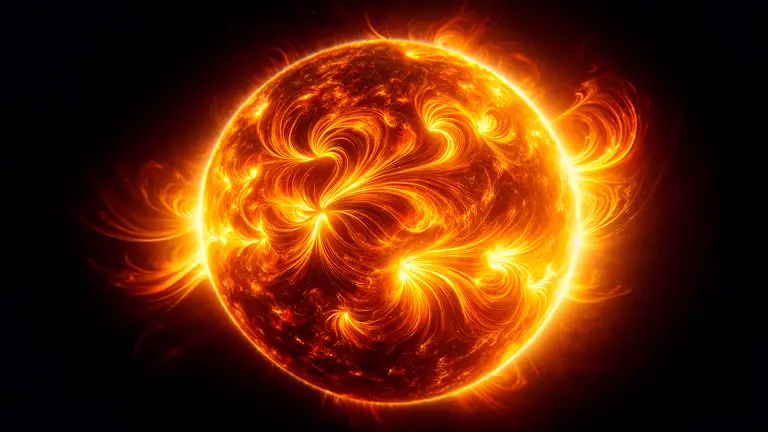- The Earth’s axis of rotation has changed in surprising ways. The reason is overwhelming and dangerous
- The Earth’s core has taken a dramatic turn in the script and that has an important impact on our daily lives

We are incredibly dependent on the Sun, and the star around which our planet orbits has cycles that vary over the years. In this way, we find that the Sun is experiencing a period of great virulence with constant solar storms that affect our planet. Now, it looks like a very large solar storm is going to occur in June.
New Changes in the Sun
In late April and early May, a major solar storm hit Earth. Throughout the past month we have been able to see the Northern Lights in places that are not usually bathed in this peculiar effect caused by the earth’s magnetic field. In fact, four solar regions erupted at once in a rather surprising and violent phenomenon.
The official website of the U.S. Government’s Space Weather Prediction Center has announced that in June we will also experience the major impact of a new solar storm. This is due to a fairly powerful solar flare, one of level X, that is, the highest currently existing within the scale used to measure these phenomena.
The solar flare, dubbed X2.8, has been discovered by NASA’s Solar Orbiter spacecraft that has continued to eject radiation into space and is thought to generate a major G5 solar storm, also the highest on the scale of measuring solar storms. Therefore, it is not surprising that during the month of June we find important Northern Lights in our country and in other areas of the planet that are not used to experiencing them due to their latitudes.
In principle, these kinds of unusual activities of the sun are not directly bad for the health of human beings. However, it generates a series of problems if we take into account that these rays interfere with electronic devices and that they can negatively alter the functioning of different key sectors for modern society.
The Long Road to the Sun
The Sun has changed dramatically in recent years, but thanks to the knowledge we have about it, we can understand that it is not something new or original at this time, but that it is something surprisingly common in solar cycles.
Samuel Heinrich Schawe, a scientist obsessed with the Sun, invested his life in getting to know the Sun better. Thus, by analysing the sun for 17 years, it was possible to know its cycles. In this way, and thanks to the efforts of scientists of this category (which was born in 1789) we can deeply understand the way in which the sun works and that it has cycles in which there is greater or lesser activity of the sun.



Comments